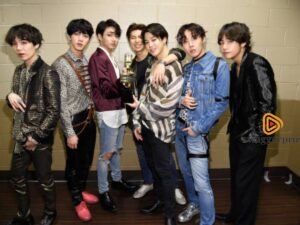
Gay Men Have Long Been Obsessed With Their Muscles. Now Everyone Is.
The Development of Body Image
An fixation with strong bodies that was once limited to gay men has spread to the general public. Multiple factors can be ascribed to this shift in cultural beliefs.
Bodybuilding and physique magazines like Physique Pictorial catered mostly to gay men in the 1950s and 60s. These magazines promoted a sense of belonging and desire by showcasing idealised masculine bodies. A component of the LGBT community’s response to societal marginalisation and the drive for self-expression was its emphasis on physical attractiveness.
Widespread Recognition
A major turning point was reached in the 1980s with the growth of the fitness industry and the promotion of muscular bodies in popular media. The ideal was made more widely known by Arnold Schwarzenegger’s legendary fame as a bodybuilder and action hero.
Amplification of Social Media
This trend is more pronounced now that social media platforms are widely used. Celebrities and influencers flaunt their bodies, creating unattainable ideals. Fitness hashtags receive billions of interactions, which support the idea that success and attractiveness depend on having a toned body.
Cultural Consequences
This pervasive fixation gives rise to worries:Insufficient self-esteem and unrealistic expectations
Men are under more pressure to uphold traditional masculinity
Commercialisation of wellbeing and fitness
possible harm to one’s bodily and mental well-being
The Adoption of Muscle Culture in Society
The infatuation that gay men have always had with muscular bodies has transcended boundaries and become a cultural phenomenon.
Important Elements
Social media: Sites that present idealised bodies feed fears and aspirations.Celebrity Influence: People are always examining and copying the bodies of well-known males.The multimillion dollar fitness industry promotes gym culture and supplements.Changing Masculinity: Physical attractiveness is increasingly considered a part of traditional ideas of masculinity.
Effect of Body Dissatisfaction: Negative self-image is caused by unrealistic expectations.
Mental Health: Anxiety and despair can be made worse by social pressure to fit in.
Inclusivity: Distinctive body forms are marginalised when muscularity is overemphasised.
The Cultural Shift of the Muscular Ideal
Once a minority interest, the infatuation with muscular physiques is now widespread in popular culture.
Historical Origins
Male physique idealised in ancient Greece.
1950s and 1960s Bodybuilding and physique magazines are part of Gay culture.
1980s Arnold Schwarzenegger and popular acceptance: the fitness boom.
Social Elements
Social media: Always comparing, never reaching norms.
Celebrity culture: Influencer marketing, famous bodies.
The wellness industry: commercialisation and fitness as self-care.
Effect on the Mind
Body dissatisfaction: Low self-esteem and a negative self-image.
Mental health: eating disorders, anxiety, and depression.
Manliness Pressure: Adhering to customary practices.
Also read this;





